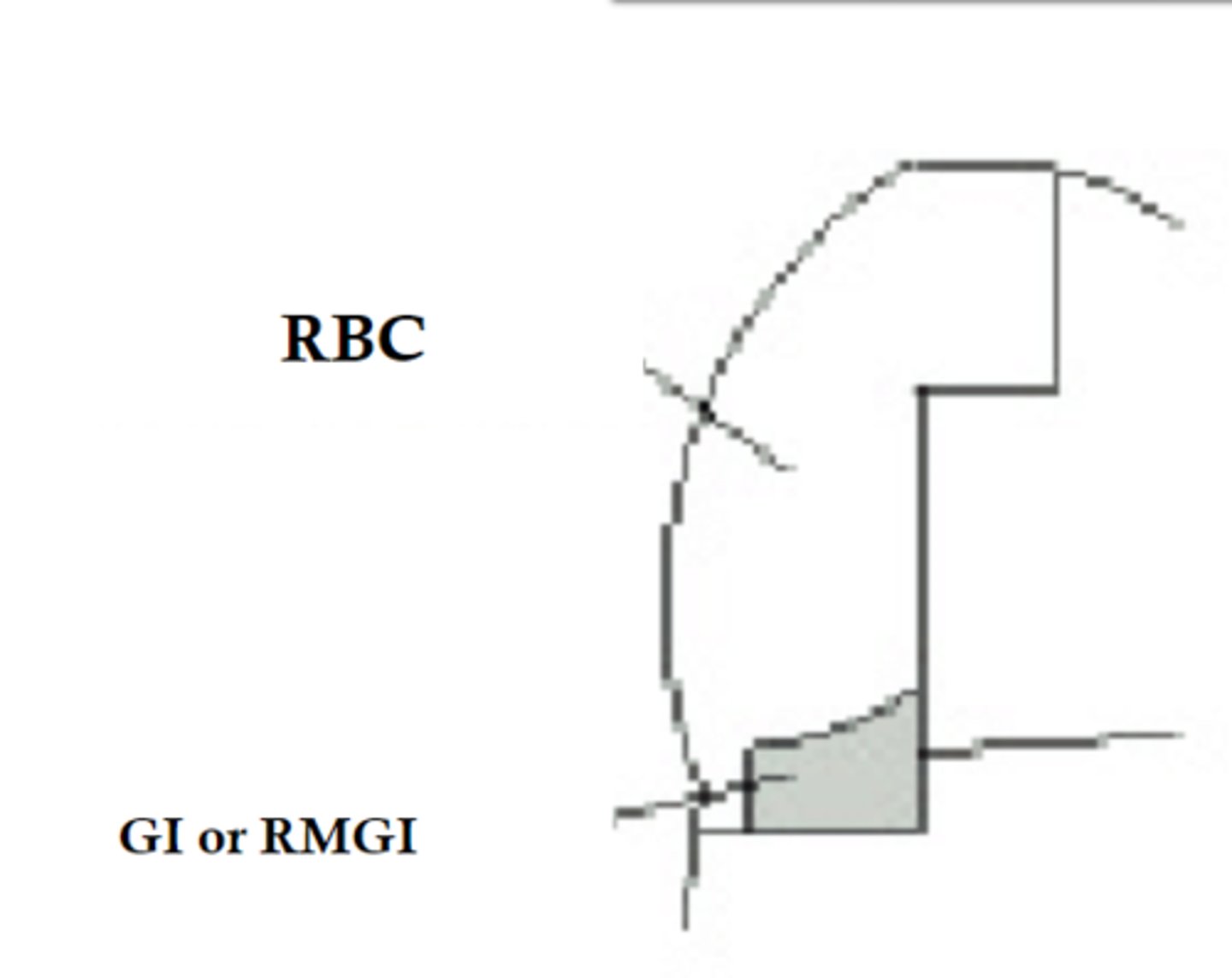1.20 Sandwich technique
1/22
There's no tags or description
Looks like no tags are added yet.
Name | Mastery | Learn | Test | Matching | Spaced |
|---|
No study sessions yet.
23 Terms
When is sandwich technique used?
High caries risk patients
Decrease stress from shrinkage
Large caries
Glass iomer release ______ into the tooth
fluoride
Why is the sandwich technique necessary?
decrease stress generated by shrinkage of composite in large caries
light cure may not be able to cure deep enough
greater amount of water in deeper layers of dentin, glass ionomer bonds better
Glass ionomer disadvantages
cannot withstand occlusal forces
less aesthetic
Sandwich technique is a two-material restoration, in which a _____ or ______ is used as a liner or base, followed by the lamination with a resin composite.
GIC
RMGI
T or F: glass ionomer capsules require light curing
false
Closed sandwich technique
CGI or RMGI is encapsulated in composite

Open sandwich technique
CGI or RMGI is exposed to oral cavity

Closed sandwich technique: liner is to be placed along the dentin walls, in a thin layer (____ mm), using a glass ionomer type III (_____) or type IV (_____, ______), and should not be left exposed to the oral environment.
0.5
Fuji I
Fuji II LC, Vitrebond
Open sandwich technique: A base is to be placed on dentin, building up from gingival wall to occlusal, in a thicker layer (> __ mm), using _____ that can be left exposed to the oral environment.
1
RMGI
because the RMGI is exposed to the oral cavity, you need to use a material that can withstand flossing
The maximum height of the approximate base is determined by the _______ _______. The GIC/RMGI must not form the ______ with the adjacent tooth.
interproximal contact
contact
Glass ionomer stops releasing peak amounts of fluoride after _____.
24 hrs
after placing glass ionomer, how do you prep the surface for composite bonding?
same steps as without GI
acid etch
adhesive
composite
Open sandwich technique used with conventional and resin-modified GICs produced significant increase in the hardness of _____ at all measurement sites in the presence of an in situ cariogenic challenge. However, only the _________ was able to increase significantly the hardness of ______.
enamel
conventional GIC
dentin
Use of the etch-and-rinse __________ adhesive system provided similar dentine hardness to that obtained with the resin-modified GIC at interface distance of 25 μm at all three depths evaluated.
fluoride-containing
Highest amount of ______ was found in the adjacent dentine when the conventional GIC was used as liner in an ______ sandwich restorative technique.
calcium
open
T or F: GI can be used as an interim restoration
true
allows remineralization and F deposition before permanent restoration
Deep Margin elevation
elevation of subgingival margin w GI to seal dentin, reinforce undermined cusps, and provide necessary geometry for restorations
Elevate coronal margin
When performing deep margin elevation, use a _____ band to help shape the margin
banana
Do amalgam restorations require deep margin elevation
no, main purpose of elevation is proper curing, because amalgam does not require light curing you do not need to elevate the margin
amalgam also has more resistance to water
most of the dual-cured composites, if light-cured, showed the same wear as the __________ used as control. Therefore, to obtain adequate wear resistance the dual-cured composites should be routinely ________.
flowable composites
light-cured
SDR Advantages (flowable)
material is more translucent so it can be cured up to 4 mm
decreased number of fillers, increased size
still cannot be used on occlusal surface
T or F: SDR does not require a hybrid layer
false
cannot resist occlusal forces
dentin replacement NOT enamel